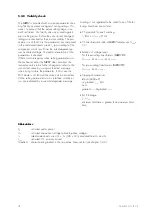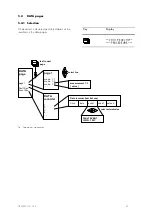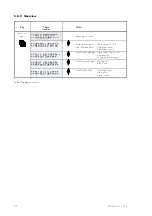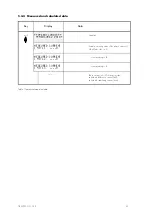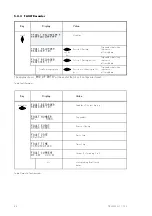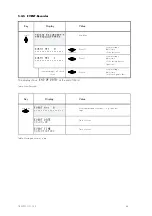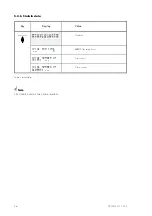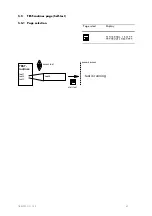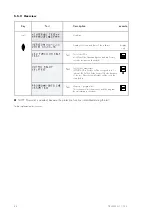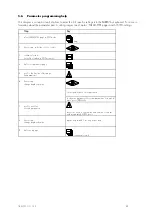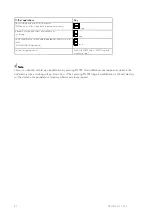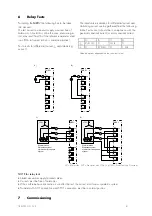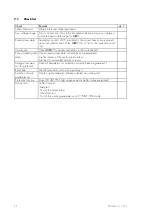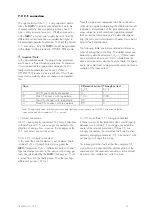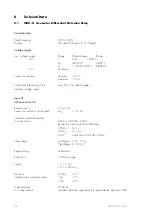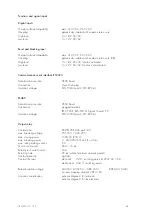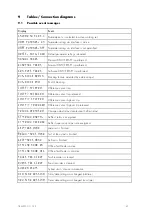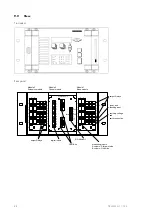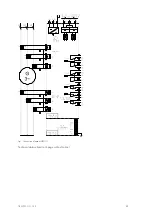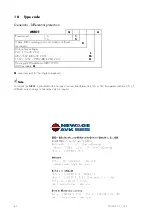
TB MRD1-G 11.01 E
53
7.2
C.T. connection
The right polarity of the C.T. is very important and so
when the
MRD1
is initially connected this has to be
checked carefully. Reverse polarity at even one C.T.
only is likely to cause trip errors. Whether connection
of the
MRD1
is correct can roughly be seen from the
differential current indication, provided the object to
be protected operates troublefree. To check the correct
C.T. connection, firstly the
MRD1
should be operated
at the object to be protected in OFFLINE TEST mode.
!
Important Note:
In this operational mode, the object to be protected
must have a sufficient back-up protection. Furthermore
it is assumed that the supervised component is not
faulty and all parameters are correct. When in
OFFLINE TEST mode it is ensured that a CT with per-
haps reverse polarity does not cause an unintended
trip.
Now the supervised component can be switched on
while observing and interpreting the differential current
indication. Interpretation of the indicated value is al-
ways subject to local conditions (operation related
fault current) and can here only be described gener-
ally. The test circuits described in chapter 6 can be of
help for fault identification.
The following table can be considered as reference
when checking the connection. The stated values are
based on symmetrical load I=I
L1
=I
L2
=I
L3
. Where loads
are involved which are not 100 % symmetrical, the
observed values may deviate from the table. All figures
are to be understood as approximate values and are a
multiple of the load current.
Case
Differential current
I
diff
/ I
n
Through current
I
s
/ I
n
1
All CTs are correctly connected
0
1
2
One CT connect. with rev.polarity
1,33
0,66
3
Two CTs connect. with rev.polarity
2,0
0
4
Three CTs connect. with rev.polarity
2,0
0
Table: Recommended values for differential current and stabilizing current indication at the MRD1 with assumed faultless
components and different numbers of CTs connected
1) Correct connection :
All C.T.s are correctly connected. This case is identical
to that where all C.T.s are wrongly connected or the
direction of energy flow is reverse. But changes at the
C.T. connection are not necessary.
2) One C.T. wrongly connected
In this case the current balance is out of place. There
is about 1/3 x I through current missing and the
MRD1
recognizes 2/3 x I differential current instead.
Input and output currents in the phase with wrong po-
larity are interpreted by the
MRD1
that way as if 1/3
x I each flow into the faulty phase. Thus the resulting
differential current is 2/3 x I.
3 / 4) Two or three C.T.s wrongly connected
In these two cases the indication does not distinguish
between two or three C.T.s wrongly connected be-
cause of the internal calculation. If three CTs are
wrongly connected, the respective fault can be elimi-
nated by changing parameter "C.T. Connection" with-
out having to change the wiring .
For locating all other faults either the complete C.T.
wiring has to be checked after disconnection of the
component or the reversed connections to be traced
by means of a suitable test current source.

